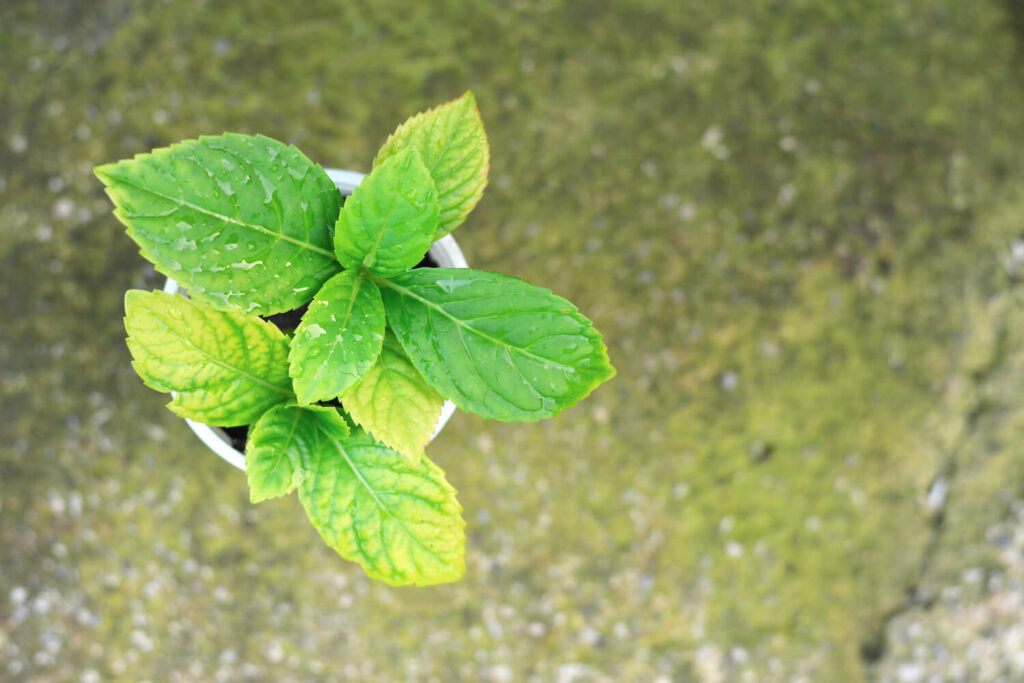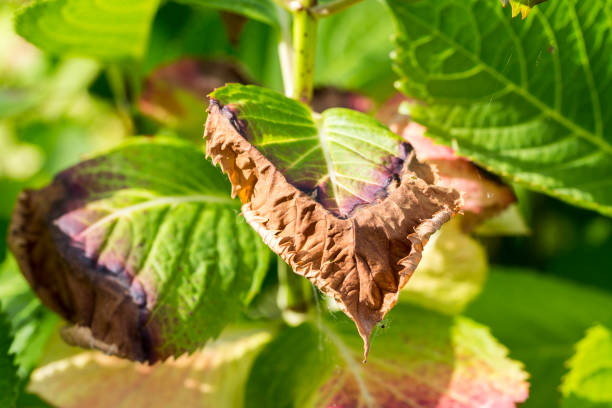How Hydrangea Leaves Turning Yellow can Save You Time, Stress, and Money.
Table of ContentsExamine This Report about Hydrangea Leaves Turning YellowSee This Report about Hydrangea Leaves Turning YellowHydrangea Leaves Turning Yellow for DummiesHow Hydrangea Leaves Turning Yellow can Save You Time, Stress, and Money.
Huge leaves frequently look saggy during the mid-day warmth. When they fail to perk up in the night or still look wilted in the morning, your plant could be overwatered.Get rid of the plant from the soil and trim out any type of origins that aren't white and turgid (plump). Replant in a new place or work some sand right into the soil for better drainage. Underwatering additionally triggers delegates transform yellow with brown, crunchy edges. Don't attempt to deal with the problem by sprinkling excessively.
Add a little bit of pure water, mix the active ingredients, and drain pipes the added water. Place a p, H screening strip in and await a reading. Conversely, you can use an low-cost moisture and ph testing meter which will certainly likewise can be found in convenient later on when you wish to examine your plant for underwatering and overwatering.
The very best method to do that is with soil changes. Sphagnum moss or peat moss prevents the dirt from condensing and betters dirt water drainage while also elevating the soil's level of acidity. You can spread sulfur contribute your hydrangea dirt also. The easiest way is to merely use a fertilizer that aids keep the appropriate acidity in the soil while likewise feeding the plant.
Facts About Hydrangea Leaves Turning Yellow Uncovered
This is one excellent factor to repot houseplants frequently (though there are others, such as origin development for instance). It is additionally why houseplants need a much stricter fertilizing regular than a lot of outdoor plants. When a hydrangea houseplant lacks nutrients, its leaves will certainly be the initial to reveal the indicators.

You will certainly additionally require to fertilize the plant manually and regular intervals. When springtime begins in March, it's the active growing season for lots of houseplants, including hydrangeas.
The dripline is the location situated under the vegetation that is the furthest far from the facility of the plant. So instead than applying feed to the facility of the plant it is best to concentrate it mostly in the external locations of the pot. If you prefer to use a slow-release plant food such as granular or spike plant food, after that cover either type with some dirt after you insert them.
Indicators on Hydrangea Leaves Turning Yellow You Should Know

The hydrangea is remarkably frost-resistant, once temperature levels begin obtaining right into the 20s, the plant is in significant threat. If the temperatures remain in the reduced 10s, that threat is much more extreme still. Undoubtedly this is more of a problem with exterior plants so if you maintain potted hydrangea outside you need to bring them inside your home in extremely cool weather condition conditions or even think about transferring them inside for you can look here the period of the wintertime.

A dried hydrangea, A large problem with many houseplants is origin rot. Origin rot takes place when you overwater a plant and due to the fact that it is such a typical issue (particularly with succulents) lots of houseplant owners are fearful of overwatering their plants. Nonetheless, hydrangeas require more watering that the majority of other usual houseplants and can come to be dehydrated when they are underwatered (Hydrangea Leaves Turning Yellow).
The Definitive Guide for Hydrangea Leaves Turning Yellow
They need generous amounts of water, but they additionally dislike to grow in standing water or water soaked dirt. Be absolutely certain that your hydrangea is dehydrated due to an absence of water and not because of it be offered as well much water (a lot more on this later). Realize prior to you click here now grab that watering can that an overwatered hydrangea shows the exact same signs as an underwatered one! Though overwatering is a significant trouble if you stint its water demands even a bit, your hydrangea will fast to show it.
The very best means to determine if your hydrangea is undersea is to examine the wetness degrees in the soil. By utilizing a reliable but affordable wetness and p, H tester, or by sticking your finger right into the dirt, you will quickly tell if the plant needs water. To obtain your hydrangea sprinkling routines on the right track, you need to be conscious concerning the dampness degrees in its soil.
When you remove your finger from damp dirt it will certainly have percentages of dirt deposit stuck to it. Dry dirt will certainly indicate your finger appears tidy or with completely dry soil that is easily blown away. If it's wet, and the plant has yellow fallen leaves then the plant has likely been overwatered and you will certainly need to follow the suggestions given up the section below.